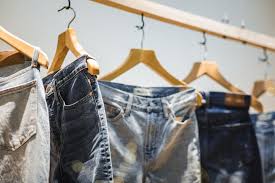
The “Broke Chic” Era: Fashion’s Mirror to Economic
April 22, 2025 UncategorizedFashion has long served as a barometer for societal shifts, and in times of economic uncertainty, it becomes a canvas reflecting collective sentiments. The emergence of the “Broke Chic” era epitomizes this phenomenon, where style adapts to financial constraints, blending practicality with creativity.
Economic Downturns and Fashion Evolution
Historically, economic recessions have significantly influenced fashion trends. During the Great Depression, the “Make Do and Mend” ethos prevailed, encouraging individuals to repurpose existing garments. Similarly, the 2008 financial crisis saw a surge in fast fashion, with consumers seeking affordable yet trendy options .
In the current climate, marked by inflation and global economic challenges, fashion is once again undergoing a transformation. Consumers are gravitating towards minimalist designs and neutral palettes, reflecting a cautious approach to spending .

The Rise of Thrift and Secondhand Fashion
A notable shift in consumer behavior is the growing popularity of thrift and secondhand fashion. Platforms like ThredUp and The RealReal have experienced increased engagement, as shoppers seek sustainable and budget-friendly alternatives . This trend not only addresses economic concerns but also aligns with environmental consciousness.
The “thrift store chic” aesthetic, characterized by vintage and repurposed clothing, has gained traction, especially among younger demographics. This style celebrates individuality and resourcefulness, challenging traditional fashion norms .
Nostalgia and the Reimagining of Past Trends
In times of uncertainty, nostalgia offers comfort. Fashion brands are tapping into this sentiment by reissuing iconic designs from the 2000s, such as Dior’s “J’adore Dior” tee and Chloé’s Paddington bag . These reimagined pieces resonate with consumers seeking familiarity amidst change.
However, an overreliance on past trends may risk stifling innovation. Brands must balance nostalgia with contemporary relevance to maintain consumer interest and drive forward-thinking design.
Luxury Market Adjustments

The luxury fashion sector is not immune to economic pressures. Major brands like LVMH and Gucci have reported declining sales, prompting a reevaluation of strategies . In response, there is a shift towards “quiet luxury,” emphasizing understated elegance over conspicuous consumption.
This approach appeals to consumers seeking timeless, versatile pieces that justify their investment, aligning with the broader “Broke Chic” ethos of mindful spending.
Fashion as Economic Indicator
Fashion trends often mirror economic conditions. The “hemline index” suggests that skirt lengths fluctuate with economic cycles, while the “lipstick effect” posits that consumers indulge in small luxuries during downturns .
These phenomena underscore fashion’s role as a reflection of consumer confidence and economic sentiment.
Future Outlook
Analysts caution that if recession odds—currently pegged at 43 % by Deutsche Bank—rise, “Broke Chic” may deepen, making thrifting, minimalism, and circularity enduring norms rather than temporary survival tactics . However, should economic conditions improve, a pendulum swing toward more exuberant trends remains possible, as fashion’s cycle continues
